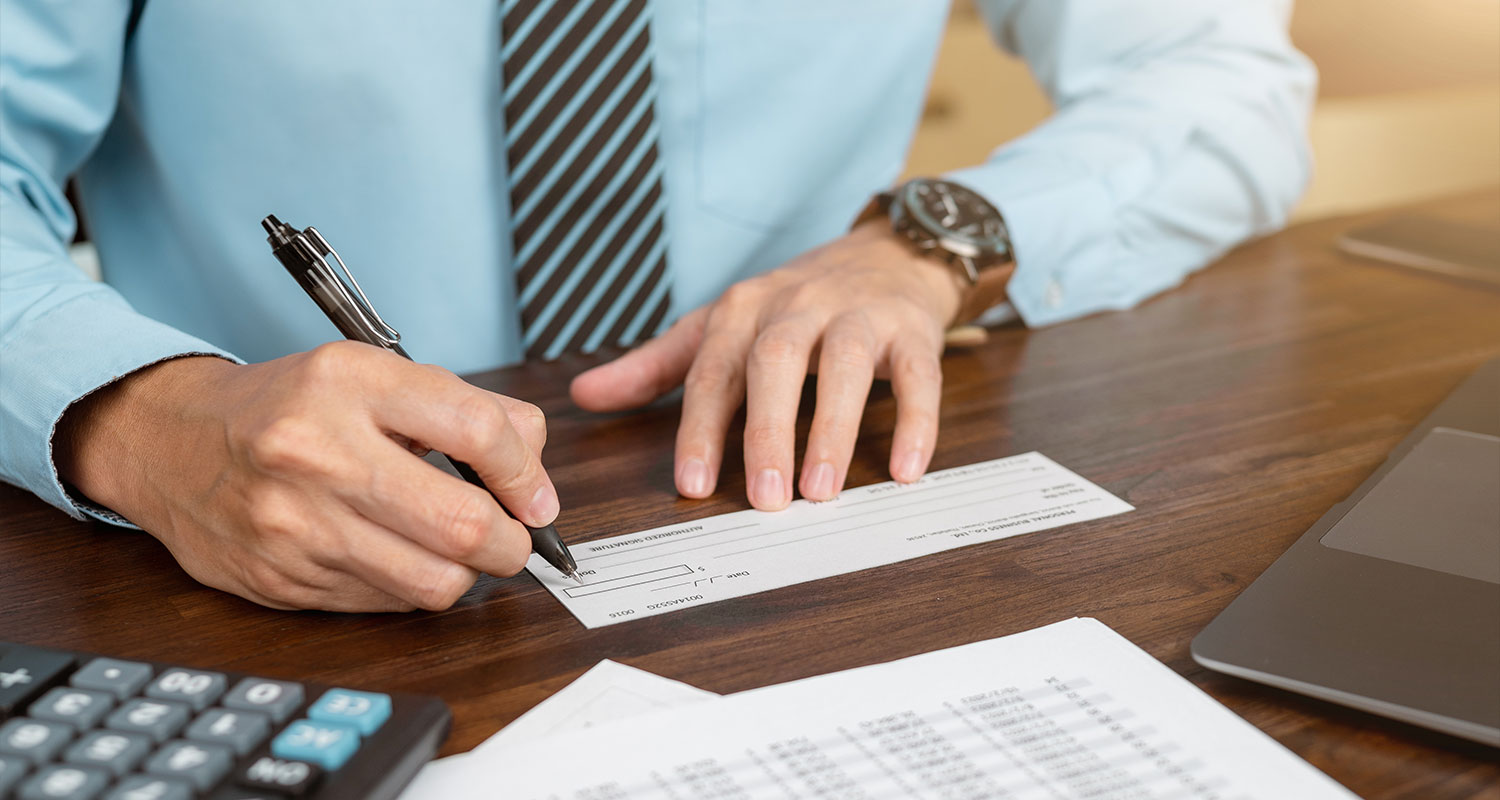We all might have heard the term “cancelled cheque” from our elders at least once in our life but it still leaves us scratching our heads when asked about it. Even if it doesn’t sound like an important document, it holds much value. From confirming your bank account details to facilitating seamless transactions, a cancelled cheque ensures that financial dealings are both secure and error-free.
But wait a minute – how do you write a cancelled cheque, and what are its various uses? In this blog, we’ll break down everything you need to know, step by step. Ready? Let’s go
What is a Cancelled Cheque?
A cancelled cheque is just a regular cheque with the word “CANCELLED” written across it. Think of it as a cheque that’s been marked so it can’t be used for payment but can still act like a proof of your bank account details. It’s like showing your ID card but for your bank account – it confirms that you’re really the owner of that account and provides all the important banking information others might need without any possibility of human error.
Why Do You Need a Cancelled Cheque?
Now the biggest question is – Why do you need a cancelled cheque? Let us make it simple for you – understanding why banks and companies ask for cancelled cheques will help you see their importance in today’s banking world. Here are the main reasons:
- Setting up direct deposits for your salary in your bank account
- Starting automatic bill payments
- Linking different bank accounts
- Proving your account ownership
- Setting up investment accounts
- Applying for loans when needed
- Starting electronic fund transfers (EFT)
Also Check- Legal Services
How to Write a Cancelled Cheque: Step-by-Step Guide
We know it might sound like a tough task but creating a cancelled cheque is easier than you might think. Here’s your simple guide to doing it right:
- Take a fresh cheque from your chequebook
- Write “CANCELLED” in large letters across the cheque
- You should use a black or blue pen
- Make sure the writing is large enough to cover most of the cheque so that there will be no possibility of its being used by anyone
- Don’t write over the numbers at the bottom of the cheque so that it’ll be visible
- Make sure your bank details are still clearly visible
Remember: Don’t fill in any other details like amount or date – the word “CANCELLED” is all you need!
Important Parts of a Cancelled Cheque
Now, you need to know that there are some important parts of a cancelled cheque that need to be visible otherwise it’ll be of no use. Here is a list that you should keep in mind:
- Bank name and branch
- MICR code (those special numbers at the bottom)
- Account number
- Account holder’s name
- IFSC code (for electronic transfers)
- Cheque number
Think of these details as your bank account’s fingerprint – they’re unique to you and help you verify your account information.
Common Uses of a Cancelled Cheque
Now the use of a cancelled cheque is not just limited to being proof of your bank account ownership. A cancelled cheque has many purposes in today’s banking world. Here are some everyday situations where you might need one:
Salary and Employment
When starting a new job, your employer might ask for a cancelled cheque to set up direct deposit. This ensures your salary goes straight into your account without any hassles.
Investment and Trading
Opening a trading account or starting mutual fund investments often requires a cancelled cheque. It helps investment companies verify your bank details for smooth transactions.
Loan Applications
Banks might ask for a cancelled cheque when you’re applying for loans. It helps them confirm your banking details and set up automatic EMI payments.
Bill Payments
Companies offering services like electricity, phone, or internet might request a cancelled cheque to set up automatic bill payments from your account.
Safety Tips When Using Cancelled Cheques
While cancelled cheques are safe to share, it’s smart to be careful. Here are some important safety tips:
- Only give cancelled cheques to trusted organizations
- Keep a record of where you’ve submitted cancelled cheques
- Make sure “CANCELLED” is clearly written
- Never sign a cancelled cheque
- Don’t share more copies than necessary
Digital Alternatives to Cancelled Cheques
Having some digital alternatives never goes to waste. So here are some alternatives to cancelled cheques that are becoming popular:
- A bank statements with account details
- A voided cheque images (scanned copies)
- A bank-verified account information letters
- An online banking screenshots (when accepted)
However, many organizations still prefer cancelled cheques because they’re considered more reliable and it’s hard to make a fake one.
Common Mistakes to Avoid
Even when you know everything about writing a cancelled cheque, it’s always better to keep in mind some common mistakes that often get overlooked. Here is a list that you should keep in mind.
- You should avoid writing “CANCELLED” too small or lightly
- Don’t cover up the important bank details
- Don’t use a pencil instead of a pen
- Never write any other information on the cheque
- Don’t even sign a cancelled cheque
What Next After Submitting a Cancelled Cheque?
After you’ve submitted a cancelled cheque, here’s what typically happens:
- The organization verifies your bank details
- They set up the requested service or process
- You might receive a confirmation email or message
- The arrangement (like salary deposit or bill payment) starts working
Remember to follow up if you don’t see any action within a reasonable time.
Key Takeaway
Understanding cancelled cheques doesn’t have to be complicated. They’re simply a tool to safely share your bank account information with organizations that need it. By following these guidelines, you can confidently handle any situation requiring a cancelled cheque. Keep this guide handy, and you’ll never be confused about cancelled cheques again!
Remember: A properly cancelled cheque is your key to smooth banking transactions and financial services. Take your time to do it right, and always keep your banking information secure.
Frequently Asked Questions
What is a cancelled cheque and why do banks need it?
A cancelled cheque is a cheque with “CANCELLED” written across it in capital letters, rendering it unusable for transactions. Banks require it as proof of your bank account ownership and to verify your account details like account number, IFSC code, and bank branch.
How do I properly cancel a cheque?
It’s easy, all you’ve to do is to draw two parallel lines across the cheque and write “CANCELLED” between them in capital letters. Make sure you don’t write over the printed details at the bottom of the cheque (MICR code). Don’t sign the cheque, and use a black or blue pen to cancel it.
Can I use a photocopy of a cancelled cheque?
Most organizations require an original cancelled cheque, not a photocopy. However, some may accept a bank-attested photocopy in special circumstances. It’s best to check with the requesting organization about their specific requirements.
When is a cancelled cheque typically required in India?
A cancelled cheque is commonly required for setting up ECS (Electronic Clearing Service) mandates, registering for auto-debit facilities, opening a mutual fund account, setting up salary accounts, and linking bank accounts for direct benefit transfers.
What details should be visible on my cancelled cheque?
The cancelled cheque should clearly show your name (if it’s a personalized cheque), your bank account number, IFSC code, your bank name and branch, MICR code, and the cheque number.
























